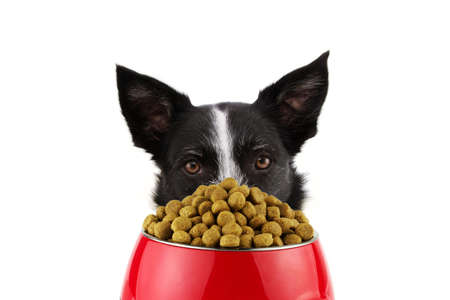1. Understanding Your Pet’s Nutritional Needs
Choosing the best pellets for your small pet starts with understanding their nutritional requirements. Each species has unique dietary needs, and providing a balanced diet is essential for their health and well-being.
Essential Nutrients for Small Pets
Small pets like rabbits, guinea pigs, hamsters, and ferrets require specific nutrients to stay healthy and active. Below is a general breakdown of key nutrients they need:
| Nutrient | Purpose | Sources |
|---|---|---|
| Protein | Supports muscle growth and repair | Pellets, legumes, insects (for omnivores) |
| Fiber | Aids digestion and prevents gastrointestinal issues | Hay, vegetables, high-fiber pellets |
| Vitamins & Minerals | Supports overall health, including bone strength and immunity | Pellets fortified with essential vitamins, fresh produce |
| Fats | Provides energy and supports a healthy coat | Nuts, seeds (in moderation), quality pellet ingredients |
| Water | Keeps the body hydrated and supports vital functions | Fresh water supply at all times |
The Importance of Species-Specific Nutrition
The best pellet choice depends on your pet’s species. For example:
- Rabbits & Guinea Pigs: High-fiber diets with vitamin C supplementation for guinea pigs.
- Hamsters & Gerbils: Balanced pellets with moderate protein and fat levels.
- Ferrets: High-protein diets since they are obligate carnivores.
Avoiding Harmful Ingredients
Certain additives can be harmful to small pets. When selecting pellets, avoid:
- Sugary fillers: Can lead to obesity and digestive issues.
- Poor-quality byproducts: May lack essential nutrients.
- Chemical preservatives: Some artificial additives can be harmful in the long run.
The Role of Pellets in a Balanced Diet
Pellets should complement your pet’s diet rather than be the sole food source. Fresh hay, vegetables, and occasional treats help maintain variety and ensure they receive all necessary nutrients.
Selecting high-quality pellets tailored to your pets needs will help them live a healthier, happier life. In the next section, we’ll explore how to read ingredient labels effectively to ensure youre making the best choice.
2. Key Ingredients to Look for in Quality Pellets
When choosing pellets for your small pet, its essential to focus on high-quality ingredients that support their overall health. A well-balanced diet helps maintain their energy, digestive health, and longevity. Here are the key nutrients you should look for in quality pellets.
Fiber: Essential for Digestion
Fiber is one of the most important ingredients in small pet food, especially for rabbits, guinea pigs, and chinchillas. It helps maintain a healthy digestive system and prevents issues like GI stasis.
Why Fiber Matters:
- Supports gut health and digestion
- Prevents obesity by promoting fullness
- Reduces the risk of digestive blockages
Recommended Fiber Content:
| Pet Type | Ideal Fiber Percentage |
|---|---|
| Rabbits | 18-25% |
| Guinea Pigs | 15-20% |
| Chinchillas | 18-30% |
Protein: Building Strong Muscles
Protein is necessary for muscle development, tissue repair, and overall growth. However, too much protein can lead to weight gain and other health issues.
Sources of Healthy Protein:
- Timothy hay-based pellets (great for herbivores)
- Soybean meal (plant-based protein option)
- Alfalfa (best for young or nursing pets but not ideal for adults)
Vitamins and Minerals: Supporting Overall Health
A balanced diet should include essential vitamins and minerals to keep your small pet healthy.
Important Vitamins to Look For:
| Vitamin | Benefits |
|---|---|
| Vitamin C | Prevents scurvy in guinea pigs |
| Vitamin A | Supports vision and immune function |
| Vitamin D | Aids calcium absorption for strong bones |
| B Vitamins | Help with metabolism and energy production |
Avoiding Unnecessary Fillers and Additives
Avoid pellets with artificial colors, preservatives, or excessive grains like corn and wheat. These ingredients can lead to obesity and digestive issues.
Ingredients to Avoid:
- Artificial colors and flavors
- Corn, wheat, or soy fillers (low nutritional value)
- Sugary additives like molasses (can cause obesity)
Selecting high-quality pellets with the right balance of fiber, protein, vitamins, and minerals ensures your pet stays happy and healthy. Always check the ingredient list before purchasing to give your furry friend the best nutrition possible!

3. Ingredients to Avoid
When choosing pellets for your small pet, its important to be aware of ingredients that may do more harm than good. Some additives and fillers can lead to health issues, digestive problems, or poor nutrition. Below are some key ingredients to avoid when selecting food for your furry friend.
Artificial Additives
Artificial colors, flavors, and preservatives are commonly found in low-quality pet food. These additives may make the pellets look or taste more appealing, but they provide no nutritional value and could cause allergic reactions or long-term health concerns.
| Additive Type | Common Examples | Potential Risks |
|---|---|---|
| Artificial Colors | Red 40, Blue 2, Yellow 5 | May cause allergies or hyperactivity |
| Artificial Flavors | Synthetic flavoring agents | No nutritional benefit, potential digestive upset |
| Chemical Preservatives | BHA, BHT, Ethoxyquin | Possible links to cancer and organ damage |
Unnecessary Fillers
Certain fillers are used to bulk up pellets without adding real nutritional benefits. These ingredients may make your pet feel full but don’t provide essential vitamins and minerals needed for a balanced diet.
- Corn and Wheat: Common allergens that offer little nutritional value for many small pets.
- Soy Products: May cause digestive issues and hormonal imbalances in some animals.
- Poor-Quality By-Products: Often include low-grade ingredients that arent as beneficial as whole food sources.
Sugary and Starchy Ingredients
Sugar and excessive starch can contribute to obesity and dental problems in small pets. Look out for added sweeteners like molasses or corn syrup, which can lead to unhealthy weight gain.
Avoid These High-Sugar Ingredients:
- Molasess
- Corn Syrup
- Dried Fruit with Added Sugar
- Sugar-Coated Grains
Selecting Safer Alternatives
The best way to ensure your pet gets high-quality nutrition is by reading ingredient labels carefully. Look for natural, wholesome ingredients such as timothy hay, fresh vegetables, and fortified vitamins instead of artificial or unnecessary additives.
4. Picking the Right Pellet Size and Texture
Ensuring your pet can easily eat and digest pellets is essential for their overall health. Choosing the right size and texture helps prevent choking hazards, supports proper chewing, and improves digestion. Different small pets have unique dietary needs, so selecting the appropriate pellet form is crucial.
Why Pellet Size Matters
The size of the pellets should match the size of your pet’s mouth and chewing ability. Pellets that are too large may be difficult to chew or swallow, while pellets that are too small might not encourage natural chewing behavior. Here’s a general guideline for different small pets:
| Pet Type | Recommended Pellet Size |
|---|---|
| Rabbits | Medium to large pellets (¼ inch or more) |
| Guinea Pigs | Small to medium pellets (⅛ to ¼ inch) |
| Hamsters & Gerbils | Tiny pellets (⅛ inch or smaller) |
| Chinchillas | Medium-sized pellets (¼ inch) |
| Ferrets | Larger, protein-rich pellets (½ inch or more) |
Selecting the Right Texture
The texture of the pellets affects how well your pet can chew and digest them. Some pets require harder pellets to promote dental health, while others need softer textures for easy consumption.
Crispy vs. Soft Pellets
- Crispy and Firm Pellets: Ideal for rabbits, guinea pigs, and chinchillas because they help wear down their continuously growing teeth.
- Softer Pellets: Better for older pets or those with dental issues who struggle to chew hard food.
Avoiding Dusty or Crumbly Pellets
Poor-quality pellets may break apart easily, creating dust that can cause respiratory issues or make feeding difficult. Always look for well-formed, solid pellets that hold their shape.
Tips for Transitioning to a New Pellet Size or Texture
- Mix Old and New Pellets: Gradually introduce new pellets by mixing them with your pet’s current food over a week.
- Observe Eating Habits: Watch how your pet eats the new pellets—if they struggle to chew or leave food uneaten, consider adjusting the size or texture.
- Avoid Sudden Changes: Abruptly switching food can upset digestion; always transition slowly.
Selecting the best pellet size and texture ensures your small pet stays healthy and comfortable while eating. By considering their specific dietary needs, you can provide them with a nutritious and enjoyable feeding experience.
5. Storage and Freshness Tips
Proper storage of your small pet’s pellets is essential to maintaining their freshness and nutritional value. If stored incorrectly, pellets can lose important nutrients, develop mold, or attract pests. Here are some key tips to ensure your pet’s food stays fresh for as long as possible.
Best Practices for Storing Pellets
- Keep Pellets in a Cool, Dry Place: Moisture and heat can cause pellets to spoil or grow mold. Store them in a pantry or cupboard away from direct sunlight.
- Use an Airtight Container: Once opened, transfer the pellets into an airtight container to prevent exposure to air and humidity.
- Avoid Storing Near Chemicals or Strong Odors: Pellets can absorb odors and harmful substances from cleaning supplies, so keep them in a safe location.
- Check Expiration Dates: Always use the oldest pellets first and check expiration dates before feeding your pet.
- Buy in Reasonable Quantities: Purchasing too much at once can lead to stale food before your pet can finish it.
Comparison of Storage Methods
| Storage Method | Pros | Cons |
|---|---|---|
| Airtight Plastic Container | Keeps moisture and pests out; easy to access | Might retain odors over time |
| Airtight Glass Jar | No odor retention; keeps food fresh longer | Easily breakable if dropped |
| Ziploc Bag (Original Packaging) | A budget-friendly option; maintains freshness temporarily | Might not be fully airtight; less durable |
| Paper Bag (Original Packaging) | No plastic waste; eco-friendly option | Poor moisture protection; short shelf life |
Signs That Pellets Have Gone Bad
- Mold or Unusual Spots: Discard any pellets that show visible mold growth.
- Damp or Sticky Texture: Pellets should be dry and firm; any dampness suggests spoilage.
- A Strong, Off-Putting Smell: Fresh pellets have a mild, natural aroma—if they smell sour or rancid, they should not be fed to your pet.
- Pest Infestation: Look out for insects or rodent activity in storage areas.
Tips for Prolonging Pellet Freshness
If you want to extend the shelf life of your pet’s food, consider storing extra pellets in the refrigerator or freezer. However, always allow them to return to room temperature before feeding to prevent condensation from forming on the food.
A little effort in proper storage goes a long way in ensuring your small pet gets the best nutrition every day!


